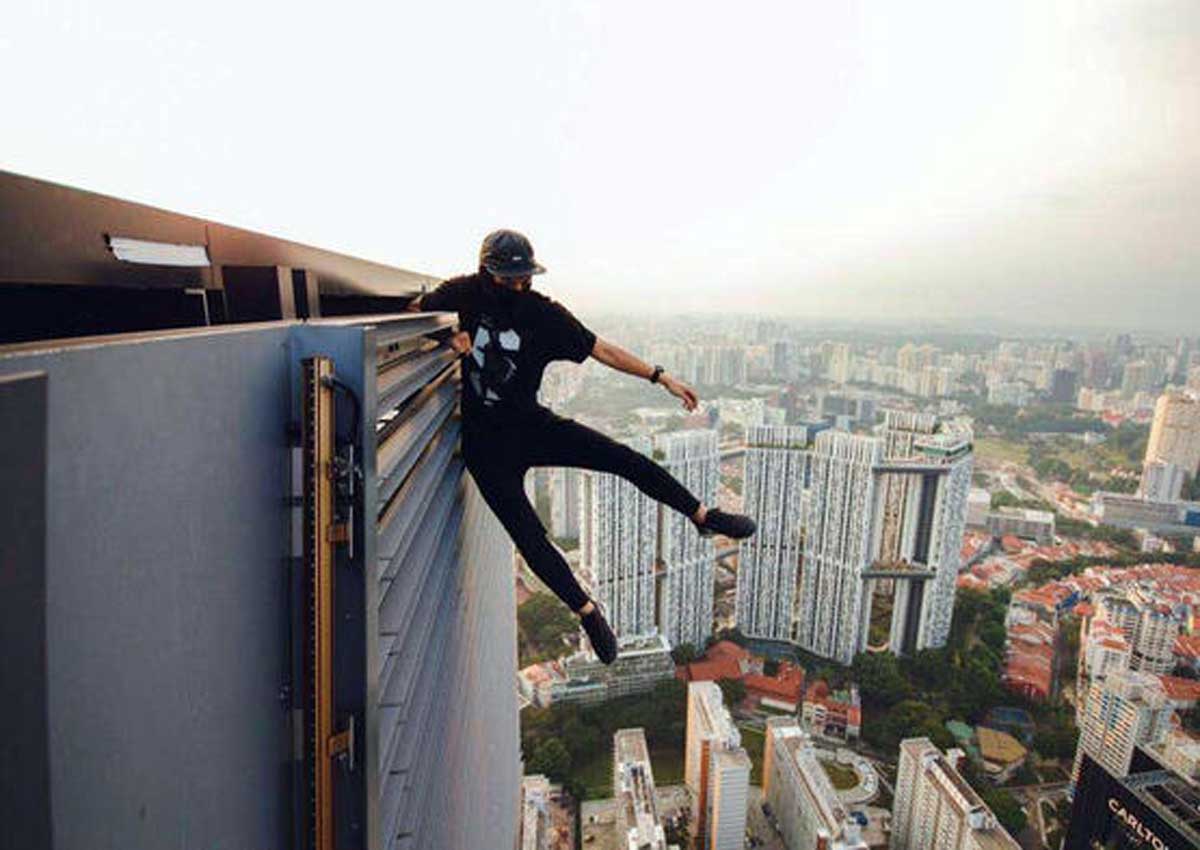It was past midnight some time last November, recalled Jason. With a camera and a tripod in his bag, he and three friends bypassed barricade tapes, snuck around security cameras and climbed 70 storeys in a building under construction in the Central Business District.
All that for the perfect rooftop photo, which he posted on social media.
“The construction workers weren’t around at the time. We climbed the fence at the back of the building and made our way up on foot,” said the 19-year-old polytechnic student. “When we made it to the roof, we climbed the crane up there too. That was my most thrilling adventure.”
Jason is part of a community of thrill-seekers who do “rooftopping”. They climb to the top of tall buildings, often illegally, and take pictures of the view beneath them. A popular shot captures the photographer’s feet dangling over the building’s edge.
Seen as an extreme form of urban exploration, in which people explore ruins or out-of-the-way locations such as little-known graves or tunnels, rooftopping has found a following here, especially among the Instagram community.
Chris, who has done rooftopping in Hong Kong as well, has more than 115,000 followers on his Instagram account featuring mostly cityscapes. The 20-year-old said: “The pictures usually get more attention when they’re shot from high – because such views are rare.”
Sometimes, he leaves people guessing where the pictures were taken. “Some ask for locations… But the scouting required in rooftopping is an art itself so I usually don’t reveal them,” he added.
Both adrenaline junkies said they started climbing commercial buildings two years ago, and explore them in pairs or groups of four.
Jason said he has climbed close to 15 different buildings, usually at night. Commercial buildings are not the only stomping ground.
According to him, newly-built Housing Board blocks, in Tampines or Punggol, for instance, that have just started housing occupants are “easiest to access as the roof access doors are usually wide open”.
Such extreme urban exploration here comes on the back of its growing popularity elsewhere in the world. In February 2014, a pair of Russians scaled the 632m Shanghai Tower and documented the ascent. The video has been seen more than 51.5 million times. In 2013, one of them posted a picture of himself standing on the edge of the rooftop of Swissotel The Stamford hotel.
Some rooftoppers show off dangerous stunts, such as walking on the edge of buildings or hanging on to the side with their hands.
Part of the thrill for these daredevils is avoiding being caught. Jason says he keeps his jaunts to under 20 minutes to avoid getting noticed by the authorities who might be patrolling. Rooftoppers who venture into private premises without permission and restricted places can be charged with trespassing.
Last February, six youths were arrested after they were found on the roof of Shaw Towers.
But rooftoppers like Jason said they are careful not to leave a mess. “When we see a lock, we don’t break it. If we can’t get past another way, we give up.”
Anthony, 19, has had his close shaves, and was caught by security guards once. But he was let off after being warned.
Despite the risks, Jason, Chris and Anthony, all of whom did not want their real names used, said they continue to do rooftopping for the adrenaline rush.
“When I first started going up on roofs, I was too terrified to stand near the edge,” said Jason. But now, “I am more scared of getting caught than falling down the building”.

This article was first published on April 10, 2016.
Get a copy of The Straits Times or go to straitstimes.com for more stories.






